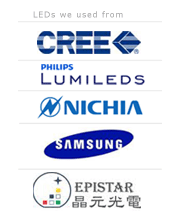Products
Search
Popular search



1-10V (0-10V) dimming LED panel light
1-10v (0-10 V) is one of the earliest and simplest electronic lighting control signaling systems; simply put, the control signal is a DC voltage that varies between zero and ten volts. The controlled lighting should scale its output so that at 10 V, the controlled light should be at 100% of its potential output, at 1v it should be at minimum output, and at 0 V it should at 0% output (i.e. “Off”). Dimming devices may be designed to respond in various patterns to the intermediate voltages, giving output curves that are linear for: voltage output, actual light output, power output, or perceived light output.
The 1-10v dimmable LED panel light is available now , please contact with our sales dept. (sales@ledpanellights.com or sales@theledlight.com.cn ) to get the details and arrange the order.
Some knowledge about 1-10v dimming solution:
There are two variations to the 0 to 10 V system, 0 to -10 V and 0 to +10 V. Despite being incompatible with each other, both systems were widely implemented by lighting manufacturers.
Dimming fluorescent ballasts and dimming LED drivers often use 0-10 V control signals to control dimming functions. In many cases, the dimming range of the power supply or ballast is limited. If the light output can only be dimmed from 100% down to 10%, there must be a switch or relay available to kill power to the system and turn the light completely off.
Most 0-10 V controllers offer either a built-in line voltage relay or an external line voltage relay. Depending on the application, these options should be considered.
In production lighting this system was replaced by analog multiplexed systems such as D54 and AMX192, which themselves have been almost completely replaced by DMX512. For dimmable fluorescent lamps (where it operates instead at 1-10 V, where 1 V is minimum and 0 V is off) the system is being replaced by DSI, which itself is in the process of being replaced by DALI.
When using this system, one must take into consideration the actual application, since controlling office lights is not the same as controlling theatrical lighting. 0-10 V lighting control is widely used in commercial and industrial lighting by ballast manufacturers such as GE, Philips, Universal, Metrolight, and Sylvania. There are distributed control approaches on the market today that can be installed inside or very near the fixture(s) to be controlled thus eliminating the wire runs and the voltage drop.
Advantages and disadvantages
The simplicity of the lighting system makes it straightforward to understand, implement and diagnose, and its low current (typically 1 mA) means it can be run along relatively thin cables with little voltage drop. However, since it requires one wire per control channel (plus a common return wire), a sophisticated system could have hundreds of wires, requiring expensive multicore cables and connectors. Over a long cable, the voltage drop requires every channel of the receiving device to be calibrated to compensate for the voltage losses. (This is only a theoretical limitation as the resistance of the thinnest practical wire is around 20 Ω/1000 m.) Interference from nearby ac power cables can affect the signal to the fitting and even cause flickering. Signal wire running parallel to power cables for a fair distance would need to be screened.
[Above information from WIKIPEDIA.ORG]

|
|
|
|
||||||||


